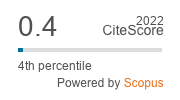Metabolites in galls induced on the leaves of Trewian udiflora (L.) (Euphorbiaceae) by Trioza fletcheri Crawford (Hemiptera: Triozidae)
DOI:
https://doi.org/10.33307/entomon.v47i3.757Abstract
Trioza fletcheri Crawford is a sap-sucking psyllid that induces galls on Trewia nudiflora leaves. Early stages of T. fletcheri feed on parenchyma, whereas late-stages and adults feed on phloem, causing galls which arise in an isolated, agglomerated mass and rosette form only on the abaxial surface of T. nudiflora leaves. The feeding action of immature stages induces changes in metabolites of host tissue and creates a nutrition sink for feeding. The biochemical study revealed that galled tissues had higher levels of metabolites (total soluble sugars, reducing sugars, total protein and free amino acids) than ungalled tissues, with average values measuring 3.4±0.09, 1.4±0.1, 0.63±0.03, 1.9±0.23, 3.0±0.72mg/gdw in ungalled leaves; 4.3±0.02, 2.9±0.3, 1.9±0.47, 3.7±0.36, 4.7±0.53 mg/g dw in young galls; 3.8±0.50, 3.7±0.3, 1.03±0.04, 2.9±0.35, 5.4±0.31 mg/g dw in mature galls; and 2.7±0.23, 2.4±0.3, 0.83±0.03, 2.6±0.34 and, 4.3±0.22mg/g dw in old galls, respectively. Enhanced activities of IAA-oxidase, á-amylase, peroxidase, and invertase were observed in galled infested leaves than in ungalled leaves, and their values were measured to be 2.45±0.53, 2.4±0.3, 0.9±0.2, and 3.7±0.5 in ungalled leaves, 2.92±0.32, 3.2±0.2, 1.9±0.5 and 4.5±0.3in young galls, 3.7±0.43, 3.6±0.4, 1.4±0.4, 4.3±0.2 in mature galls, and 2.51±0.03, 2.9±0.4, 1.4±0.4, 3.8±0.1 in old galls respectively.


